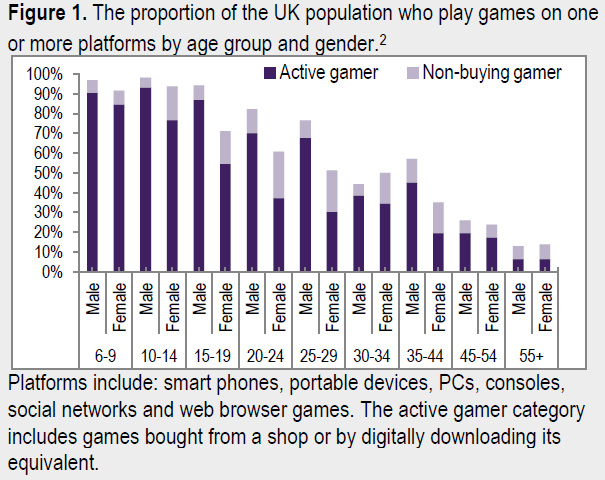“The more we looked at it, the more we saw gaming was taking over the lives of kids,” commented Keith Bakker, director of Smith & Jones Addiction Consultants, during an interview when he introduced a new programme in response to this fast-growing problem among young men and boys.
The advance in mobile technologies and the proliferation of smartphones have increased the opportunity to game and thus made video game addiction one of the fastest growing types of addiction. Video game addiction has profound influence on our children’s behavioural and psychological development. This article summarizes the key aspects of the discussion.
Why Video Games Are Addictive
First of all, it’s important to look into the possible reasons why children and teenagers play games. Strip away the deliberate addiction design by game developers, and you’ll find that video games have a psychological feel-good factor.
Psychologist and clinical director of the Center for On-Line Addiction, Kimberly Young, once suggested that gaming is in the same category as gambling, which elevates dopamine during the act of play. But there’s more to addiction than brain chemistry. “Even with alcohol, it’s not just physical. There’s a psychological component to the addiction, the knowledge that ‘I can escape or feel good about my life’.” Unlike dissociative disorder patients, who often involuntarily escape reality in an unhealthy way, game addicts intentionally change the way they feel by changing the environment and dissociating from reality, replacing it with a fantasy world where they can be whoever they want to be and perform tasks that they have always craved in real world but are unable to do so. For example, as Young puts it, an intelligent child who is unpopular at school can “become dominant in the game.” The virtual life, as a result, becomes more appealing than real life.
Parenting Style Affects Gaming Behaviour
When we talk about children using video games to escape reality we often ignore the key question: What reality are they escaping from? Unlike gamblers or drug addicts who usually turn to their addiction out of desperation, Most children who can afford video game devices are from middle-class or affluent families. So what exactly are these young game addicts escaping from?
Linda Jackson, lead researcher and professor from Michigan State University, surveyed more than 500 students from 20 middle schools and found that the more children perceived their parents’ behavior as negative (e.g. “nags a lot”), the more likely they were to play video games. Hence, a parent’s negative interactions with their child may be the cause that drives the child into the world of video games, perhaps to escape the parent’s negativity. Another study from the Chinese Journal of Clinical Psychology has also shown that high school video game addicts in China tend to have parents with an authoritarian parenting style.
The Effects of Video Game Addiction
There is growing concern over digital media consumption among children. The psychological theories of learning and socialisation typically suggest the importance of mimicry, role models, practice and interaction in acquiring knowledge and learning both ‘good’ and ‘bad’ behaviours. Naturally, many parents worry that new aggressive behaviours can be easily learned by children while playing violent games. Substantial research has been conducted to study the impact of video games, especially violent games. I’d like to summarize some of the key research and findings below.
Aggressive behaviour: Violence in video games is often portrayed as justified, fun, and without negative consequences (Funk, Baldacci, Pasold & Baumgardner, 2004). A majority of children prefer playing violent games over non-violent ones (Funk et al., 2004). The consistency of the results from experimental, cross-correlational, and longitudinal studies demonstrate that violent video game play is a causal risk factor for physical aggression. This effect occurs in short-term and long-term contexts, across gender and culture, and to children and adolescents (Prot & Anderson, 2010).
Physiological arousal: Playing video games tends to produce physiological arousal (Swing, Gentile, & Anderson, 2009). Arousal can be measured in experimental studies using indicators such as heart rate, blood pressure or skin conductance. Aggression can be influenced by arousal in several ways. Heightened arousal strengthens the dominant action tendency, including aggressive tendencies (Prot & Anderson, 2010).
Desensitization and empathy: Exposure to violent media can lead to desensitization – a reduction in emotion-related physiological reactivity to violence (Carnagey, Anderson & Bushman, 2007). Anxiety associated with violence can serve to inhibit violent behaviors, so desensitization to violence could lead to disinhibition of aggression. This kind of emotional blunting may also lead to an underestimation of the seriousness of observed violence and reduce the likelihood of helping a victim (Carnagey & Anderson, 2003). Empathy refers to the degree to which a person subjectively identifies and commiserates with a victim and feels emotional distress (Anderson et al., 2010). One of the predicted consequences of desensitization is a decrease in empathy for violence victims (Carnagey, Anderson & Bushman 2007).
Reduced Prosocial behaviour: Prosocial behaviour refers to helping or rewarding others, especially when this behavior brings no benefit to the helper. The same learning processes that link violent video games to aggressive behavior could also be expected to suppress and interfere with prosocial behavior. In fact, several studies have documented reduced prosocial behavior in response to violent game play (Prot & Anderson, 2010).
Why Young Children Are More Affected by Video Games
These problems affect children more than other age group, but why? To answer this question requires understanding how children interpret and evaluate virtual experiences. The frontal lobes (the part of the brain that is responsible for reasoning and evaluation skills) are less developed in young children. This makes them more susceptible to negative, especially scary and explicit content in video games and broadcast media because they are less able to interpret context. The increasing realism of games – evident in recent releases that come with much more realistically rigged characters and rendered scenes – is a concern because younger children are less capable of distinguishing between reality and fantasy.-
Will enhanced realism increase the potential for addiction and adverse effects of violence? Can the elements of video game play such as thoughts, feelings and actions cross into players’ real life as suggested by a theory called game transfer phenomena? The full impact of increasing realism has yet to be discovered.
Types of Games
There are many types of games that children play. Some are more addictive than others. Below is a list of popular game genres.
Virtual worlds (e.g. Second Life) are computer-based simulated environments, through which users interact through digital avatars and engage in various types of social activities. A virtual world is like the Matrix movie coming alive, minus the parts with the scary killing machines.
Simulation games (e.g. The Sims) replicate real life activities. Players assume more of a “manager” or a “creator” role during game play, whereas in virtual worlds every player plays an equal part and the entire social dynamics control how the virtual world will function and evolve.
First-person shooters (FPS) (e.g. Counter Strike) are weapon-based combat games from the first-person perspective. This particular type of game is usually in 3D. Real-time and highly engaging, FPS games require high concentration and coordination during game play.
Massively Multiplayer Online Role Playing Games (MMORPGs) (e.g. World of Warcraft) combine the elements from virtual worlds, simulation games and some aspects of first-person shooters. In MMORPGs, players assume the role of a character, which is developed by continued game play. Groups and tribes are common in MMORPGs. Cooperation with (and competition against) others are integral to the game, so that players interact and communicate with one another within the virtual environment. So far, MMORPG games are considered to be the most addictive game genre.

In World of Warcraft, player-controlled characters interact with each other in the virtual game environment.
Casual games
Casual games are short and simple games, usually played on mobile phones or directly over internet. Examples are Angry Birds, Bejeweled and Plants vs Zombies.
Playing casual games seems like a harmless way to spend free time, but it can sometimes spiral into a serious video game addiction. Casual games have recently gained momentum because of the rapid market penetration of smartphones. As they are not too serious and don’t generally involve much of a storyline, casual games usually involve simple and repetitive actions. Players can play one round or conquer a stage within minutes. These make casual games popular among smartphone users as a convenient time-filler, at bus stops and train stations for instance.
Unlike with larger-scale video games, there is a lack of research and study on the impact of playing casual games. However, I believe casual games can easily erode our time from doing important tasks at hand and exacerbate procrastination. This is because with smartphones, casual games today are so readily available and accessible. Taking a break by playing some games has never been so easy.
A Silver Lining
After sharing the negative effect of playing video games, we wonder: why did we invent such evil endeavours in the first place? Is playing games all bad? What about the benefits of playing video games? I will write about the positive effects of games in my next article, Video Game Addiction in the Age of Smartphones (Part 3).
I will also discuss in detail a genre of games called Serious Games. Serious games are developed for therapeutic use, health care interventions, or for educational and training purposes. There is a lot more than meets the eye with serious games.

at 5:48 PM
My son started playing games right from the age 1.5..earlier it was limited to educational/learning games but now has gone beyond it to playing Angry birds, Mario, Crazy racer and dozens of more. The only thing is that he isn’t addicted as of now (he is just 3 year and 2 months old)
Here the role parents is crucial. You can’t convince yourself saying, “He is quite and busy doing his work.”
We ensure he is taken out to the park nearby and spends some time in outdoor activities.
Great article by the way.
at 3:54 PM
Awesome Info Will come back for more info